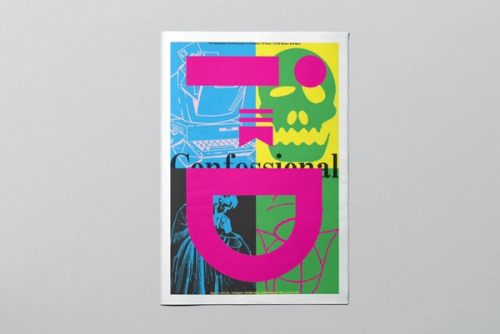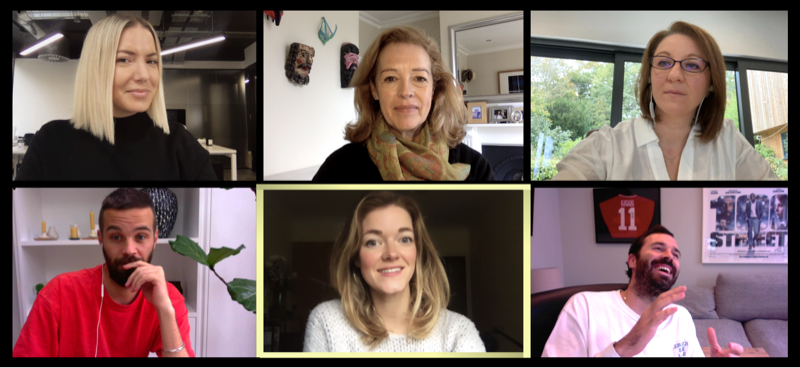Is PR still relevant for today’s brands? What can it actually do for them, in terms of driving results and growing a business? And how do you know it’s the right time to bring in a PR agency?
“Twenty, even ten, years ago PR was all about media connections”, says Alex Daly, founder of Daly, a comms agency in New York, Los Angeles, and Miami that’s worked with Substack, Brooklyn Museum, and Penguin Random House. “It was press releases and rolodexes and Samantha Jones from Sex and the City. But you can’t really depend on that approach to PR anymore. Media has become super decentralised - publications are cutting budgets, journalists are leaving to start their own Substacks; there’s a higher turnover. It’s a lot more about building stories from the ground up.”
The shift that Daly describes is something we’ve noticed in the PR briefs that we’re receiving from clients, many of which look very different to what we’d traditionally associate with PR. Instead, we’re seeing first-hand how brands’ needs are evolving to encompass a wider comms ask.
“I like thinking about today’s PR as a brand engine”, says Leland Drummond, co-founder of AZIONE, a creative communications agency that’s helped the likes of Hoka, Kosas, Equinox and Lacoste. “It’s not just about press now - it’s positioning, it’s partnerships, it’s presence. It’s this hybrid fluency, where earned meets owned meets influence. It’s that intersection where you win, and I don’t think brands can exist anymore without having that line of thought.”
Much of this has been driven by the rapid digital acceleration, even in the past 5 years, that’s opened up new opportunities in the space. Social listening gives brands a much clearer idea of what consumers are looking for, while the media world has fragmented to create space for smaller and more niche audiences.
“It’s gone from controlling the narrative to creating culture”, Drummond adds. “There used to be a very reactive nature to the vocation, mapping out marketing calendars with stories that would align with certain cultural events.”
“But now everything is so fast-paced, you can shape the identity of a company in real time. You can see what’s working and what’s not. Something can catch like wild fire in a lane that you didn't think you were going to go down or put that much emphasis on, so you adapt. You have a true sounding board for everything that you’re doing.”
“Your press moment might come from a Substack mention, it might come from a brand collab, it might come from an influencer shout out. The idea of what a story is has changed.”
Alex Daly, Founder, Daly
THE RISE OF NICHE PLATFORMS AND MICRO-INFLUENCERS
Arguably, the biggest change in recent years was driven by Covid. “It killed a lot of publications and forced the media to reconsider how they tap into their audiences, in a much more serious way than they had before”, says Daly.
Influencers, podcasts, and newsletters – while nothing new – expanded far beyond what existed before, both in terms of amount and reach, and began to drive taste, trust and trends. Niche communities were formed, with small but dedicated followers, catering to everything from design enthusiasts to cycling fanatics and foodies. As a result, PR strategies had to evolve.

“The best PR meets readers where they are”, says Daly. “A lot of brands come to us and talk about how they want to get into The New York Times. That’s when we have to push back and say, is that what your audience is actually reading and paying attention to? Or is there a more targeted approach that we can take, where we know there’s already a super loyal and engaged following who will really listen to what you have to say.”
That’s not to say legacy media isn’t still important. Top-tier traditional media outlets still act as a stamp of credibility, of showing that you earned your place. And while their reach is not as high as it used to be, they still give your brand access to a mass audience. It’s just not the only seat at the table anymore.
“There's a porous boundary between brand and media now”, says Daly. “Your press moment might come from a Substack mention, it might come from a brand collab, it might come from an influencer shout out. The idea of what a story is has changed.”
LESS SERIOUS, LESS POLISHED, MORE HUMAN
The rise in niche media and micro influencers also points to another shift: the breakdown of trust between traditional media and its audiences.
As Daly says, “People are allergic to bullshit. They don’t trust glossy over-engineered messaging. They want the truth. People want to see the people behind the brands. They want to see the vulnerability. They want to see the humour.”
As an example of this, Daly references a recent podcast appearance by Steve Madden, whose direct and honest answers made him a man of the moment, especially among a younger audience who weren’t previously familiar with his story.
Hearing someone speak candidly about their experiences feels refreshing, not just in podcasts and interviews, but in editorial too. In fact, Drummond says that this is one of the drivers behind Substack’s growth. “We’d reached a point where everything had become so commerce-driven, especially in fashion and beauty. So to have a long-form editorial voice again, that’s opinion based and not tied to advertising, feels authentic and people have been craving that for a long time.”
“People are allergic to bullshit. They don’t trust glossy over-engineered messaging. They want the truth.”
Alex Daly, Founder, Daly
“Our role as comms pros is to help rebuild that trust between the media and its readers by telling really great stories”, agrees Ally Bruschi, partner at Daly.
“It’s part of our media training too. We emphasise not to just stick to the talking points and tell the same story to 15 different publications. How can you tailor your story for socials vs New York Magazine vs a design publication vs Refinery29. It’s that ability to switch messages based on your audience that makes you compelling.”
GOING VIRAL ISN’T ENOUGH
Of course, once you’ve built that halo and community around your brand, you want it to last. AZIONE’s Drummond explains that the secret behind staying power and longevity is making sure there’s meaning to everything you do.

“We have clients come to us wanting to be viral and wanting momentum”, she says. “We balance that out by convincing them that they need to have meaning behind that action. Our job at AZIONE is building foundational brand relevance through different channels, like cultural partnerships for example, that really matter. Moments that aren’t just a quick flash in the pan but ones that you can look back on and say that was foundational and transformational for the trajectory of where our brand went.”
She adds, “It’s easy to be distracted – especially when there’s something new trending every week. But do you let yourself get distracted by every trend? Or do you pause and consider, does this actually connect with what we’re trying to do here?”
“To earn emotion, you can’t just say things louder. You have to be smarter, more thoughtful, authentic and consistent.”
IT DOESN’T WORK AS AN AFTERTHOUGHT
It’s a lot easier to ensure there’s meat to everything you do when it’s been considered early on, as opposed to being retrofitted. A lot of early-stage businesses fail because they focus so much on product that they neglect the internal and external comms needed to show why the product matters, and end up looking and sounding like brands that people have seen before – with no differentiation, or anything that resonates and people can buy into.
“Bring us in early, let us help with the messy stuff instead of trying to figure everything out first.”
Leland Drummond, Founder, AZIONE
While most PR teams are handed a finished brand or product that they then have to translate to an audience, it can make a big difference if they’re brought in at an earlier stage. Drummond explains, “If you're going to entrust us with the megaphone to your brand, give us a seat at the table and ensure that we're true partners. Bring us in early, let us help with the messy stuff instead of trying to figure everything out first.”
So what does successful PR look like? Because good comms requires investment, a lot of clients determine success based on revenue. According to Drummond, many are quick to call it a failure if they’ve paid an influencer a lot of money for a post and it hasn’t had a huge immediate impact on sales.
“But it’s not just about that”, she explains. “It’s more like what did we do with the ingredients we just created? How are you using this content to remarket and retarget people? Are you putting it in your ad campaigns? Are you making it a part of your community marketing via UGC? For example, are you getting your community talking about the fact that they read something in Fast Company saying that your brand had the most comfortable shoes ever? Or that said celebrity was seen wearing them? Ultimately, it's what you do with each piece of content that drives revenue. That’s the cross-channel fluency.”
“The media is super fickle and sometimes we can’t hit our exact goals. We need to make sure that our clients trust us enough to know that if we’re not hitting those, we’re coming up with new ones that are also going to serve their end brand awareness or growth objectives”, adds Daly’s Bruschi.
“You’ve hired an agency for their expertise and their instincts”, she continues. “If you make space for them to actually lead and execute their vision, you're going to be much happier with what you get.”
ASK US FOR IDEAS has introduced hundreds of marketers and brand leaders to their ideal agency for ongoing PR support as well as social, influencer and talent partnerships – and many other creative briefs. Get in touch to find out more.
Images shown, from top: A media power breakfast hosted by Daly, Care of Chan and Substack; i-D x Substack collab; an AZIONE campaign for Mansur Gavriel.



